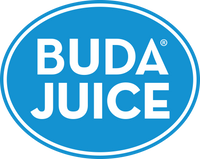
· By Luna Meschiari
Mediterranean Diet: 10 Steps to a Healthy Lifestyle
But do you really know what it is?
What are the servings you should take each day or how to organize your own diet?
The Mediterranean Diet is known culturally and internationally. Considered a philosophy of life based on the way of eating food. The way food is cooked and the way it is combined makes it unique. This was even recognized by UNESCO. The Mediterranean Diet was inscribed as one of the elements of the Representative List of the Intangible Cultural Heritage of Humanity.
"The healthy diet provided by the Mediterranean Diet is perfectly compatible with the pleasure of tasting tasty dishes".
What products are consumed in the Mediterranean Diet?
In the Mediterranean Diet, people consume products of the land, such as fruits, vegetables, legumes, cereals and nuts.
In addition, a good consumption of healthy fats such as olive oil or avocado. Its moderate intake is fantastic in our diet. Also foods of animal origin such as eggs, low-fat dairy products and fish are recommended. Red meat and processed products are recommended to be reduced.
The Mediterranean Diet is a rich source of vitamins, antioxidants and fiber. With a great combination of foods you can make a diet adapted to your needs. Not just for weight loss but as a lifestyle. It is also suitable for people with heart problems or hypertension. Due to the properties that olive oil contains, it is suitable for controlling blood pressure levels.

GUIDE TO FOLLOW THE MEDITERRANEAN DIET
After everything we just told you about this diet, we're sure you're drooling thinking about the amazing dishes you could be eating. It is time to put your new diet into practice and the following tips will help you!
- Increase the consumption of fruits and vegetables. They provide vitamins, minerals and fiber. Consume 5 servings a day.
- Legumes. They provide a large amount of protein. 2 to 3 times a week.
- Cereals. It is believed that by being on a diet we must forget them. But it's not like that. You just need to know the necessary amount that your body needs. Oats, wheat, corn, potato, rice, quinoa. These will provide us with the energy that our body needs for its daily activities. Remember that the secret is in the quantity. 30-40 gr per serving. You can include it in your breakfast, lunch ... Whenever you feel like it the most!
- Yes to good fats. Mainly olive oil. It is rich in fatty acids. You can use it for salads or for cooking.
- Eggs. It is a food rich in nutrients and proteins. You can consume it up to 3 times a week.
- Milk and dairy products. They will provide you with a good amount of protein.
- Fish. Rich source of good fats and proteins. 1 to 2 times a week.
- Limit the consumption of red meat. Choose the lean ones and always with vegetables or cereals.
- Nuts. They are perfect for those times when you have need a snack or crave to crunch on something. They have a lot of nutrients and there is a great variety. Just make sure to never have more than 8-10 per serving as they have a high caloric profile.
- The consumption of water should be one of the bases of this diet. The amount is 2.5 liters per day.
- On the other hand, wine is also characteristic of the Mediterranean diet, so you can consume it in moderation.

Ok, now you know the ingredients, but what about some typical Mediterranean dishes?
Mediterranean Diet Dishes and Recipes
- Bruschetta. It is a typical Italian dish that consists of toasted bread with olive oil. It can be accompanied with the ingredients that you like the most. Like tomato, basil, pesto, garlic, eggplant, ham with different types of cheese. Usually served as a starter.
- Gazpacho. It is a cold soup. Made with tomato as its main ingredient, garlic, green pepper, salt, oil and a touch of Sherry vinegar. originally from Spain.
- Hummus. Similar to a puree. It is a thick paste made from chickpeas, tahini, oil, lemon juice and garlic. It is an excellent source of protein, healthy fats, and fiber. It is usually served as a side with raw breads or vegetables.
- Moussaka. Very popular dish in the Middle East and Greece. Similar to a lasagna, but instead of pasta layers, it's made with aubergines layers, meat and tomatoes.
- Paella. Known internationally. Classic of Spanish cuisine made with rice and seafood.
- Ratatouille. Provencal stew very popular in France that combines aubergines, tomatoes, onions, peppers, olive oil and herbs.
- Falafel. Typical Middle Eastern dish based on ground chickpeas and spices, from which meatballs are formed, which are then fried in olive oil.

To finish this blog, it is important to note that there is no single Mediterranean diet. There are more than a dozen countries that touch the Mediterranean Sea, and they have adapted this diet to their own cultures. Creating thousands of recipes to drool for! You can choose from a wide variety of foods and combine them as you like best. Consult a nutritionist for more information.
As you have read in this blog, The Mediterranean Diet allows you to make many combinations. You can combine foods, flavors, and typical foods from all over the Mediterranean Sea. You can create recipes with unique flavors. With a good nutritional contribution, perfect for maintaining a complete, varied and balanced diet.
Make sure you get to know the Mediterranean culture to be able to create your dishes with your favorite foods. Remember that there is no such thing as a miracle diet. But you can eat healthy and balanced to stay in shape and lose weight. Remember also that it helps improve your body inside. Combine The Mediterranean Diet with daily physical activity. This way you will be able to see really healthy results throughout your life.
